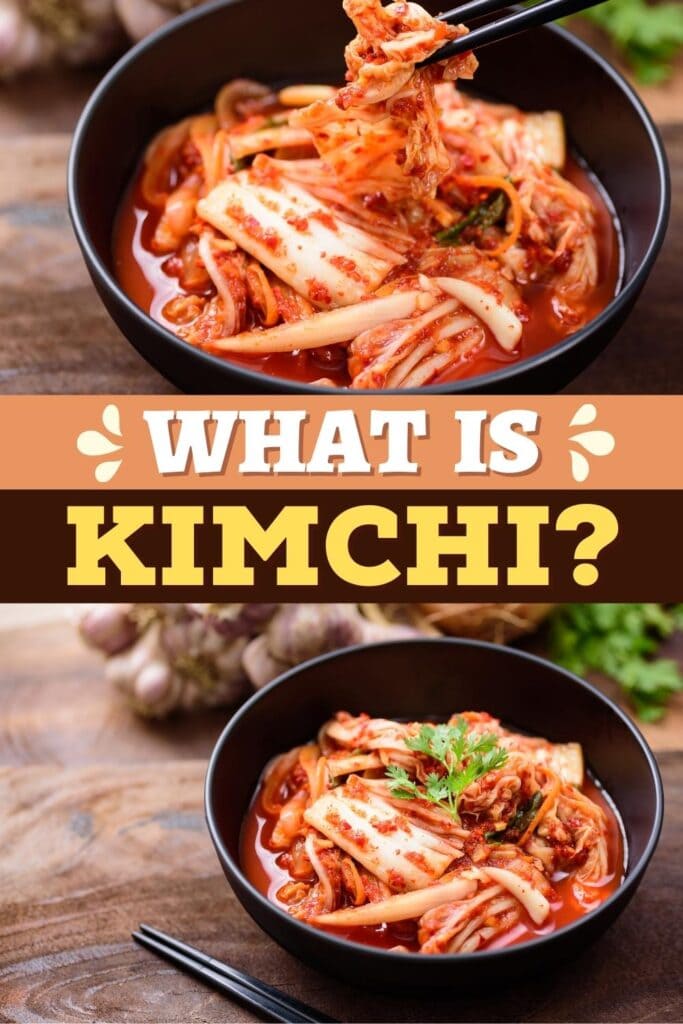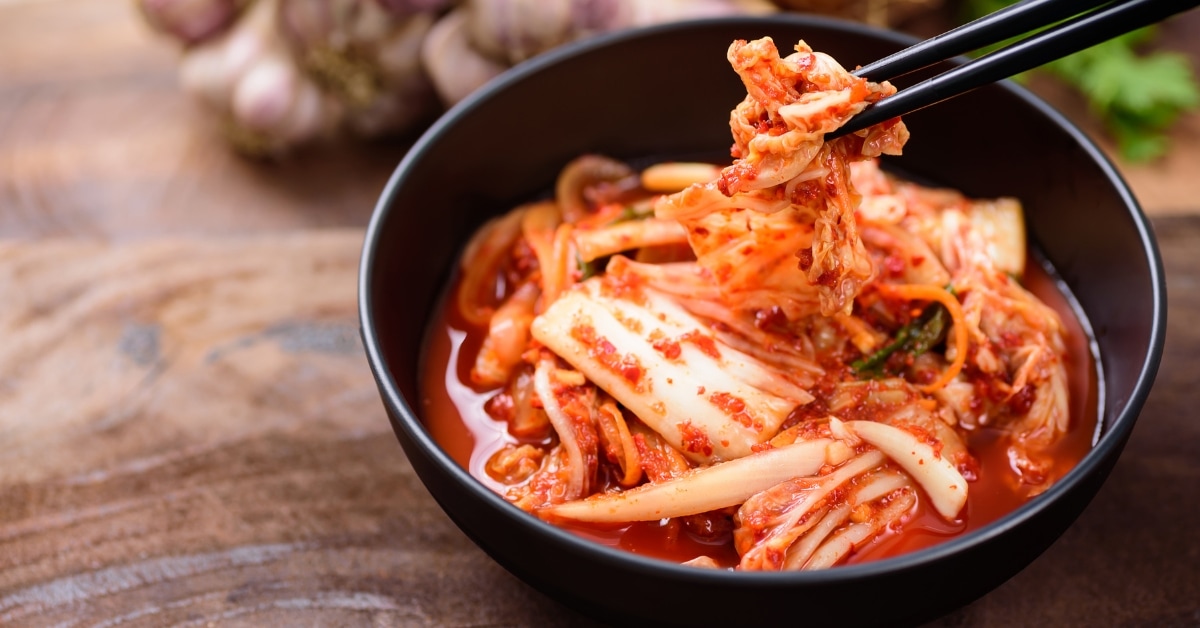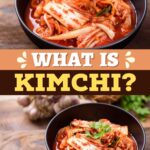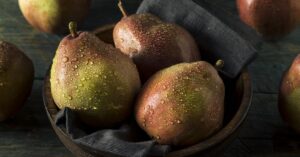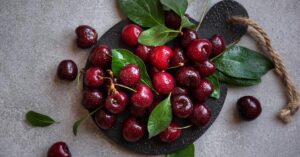When you hear the words Korean cuisine, kimchi instantly comes to mind. But what is kimchi exactly?
Kimchi is a staple in Korea. You simply can’t eat Korean food without it!
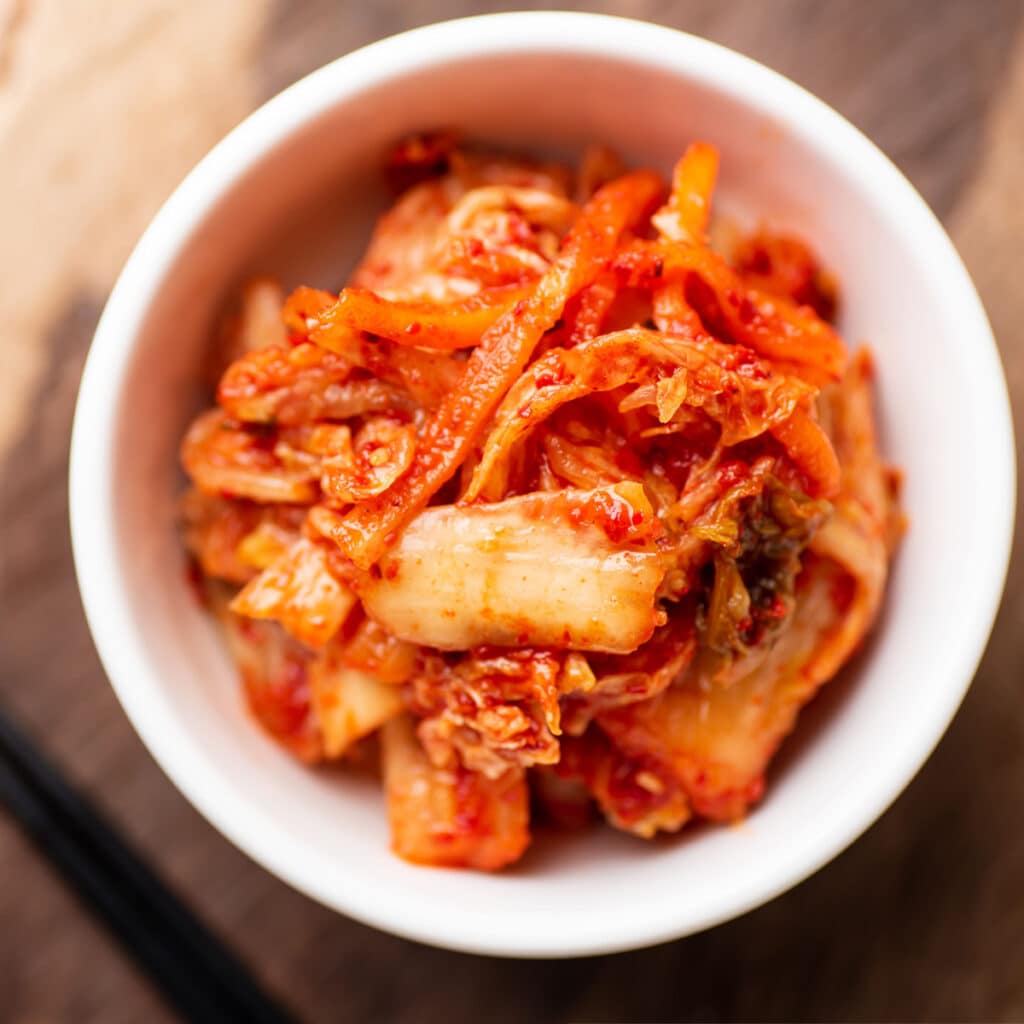
It’s beloved for its spicy, salty, and tangy flavors. It’s also eaten for the health benefits and plentiful probiotics.
You won’t just find kimchi in Korea. Its popularity is growing around the world!
From kimchi pancakes to Korean burgers, there are tons of ways to enjoy kimchi.
Whether you want to learn the basics or you’re looking to make it, let’s take a deep dive into the wonders of kimchi.
What Is Kimchi?
Kimchi is synonymous with Korean food.
It’s a funky fermented veggie condiment that features cabbage as the star ingredient.
The flavors of kimchi can vary by region, type, and brand. There are more variations of kimchi out there than one can count!
However, the key ingredients typically include fish sauce, ginger, garlic, and gochugaru.
Any way you make it, kimchi is gut-friendly.
Packed with probiotics, vitamins, and minerals, it’s super good for you.
Nutrient-dense kimchi gives the immune system a boost and helps with inflammation.
It’s good for heart health and some sources say it slows aging too.
From breakfast to dinner, Koreans eat kimchi with every meal of the day.
It not only has a ton of nutrients and flavor, but it’s also a palate cleanser.
Like other fermented foods, kimchi is an excellent way to preserve veggies for the winter months.
This is how it began in the first place.
Kimchi has been around since ancient times.
It was originally created to provide sustenance during the winter when food was scarce.
Prepared kimchi was packed in ceramic pots called onggi, then stored in the ground.
The process is a bit time-consuming. So it’s not surprising that households would make it together as a group effort.
Traditionally, it wasn’t spicy. Today, you can find plenty of versions out there with a fiery kick.
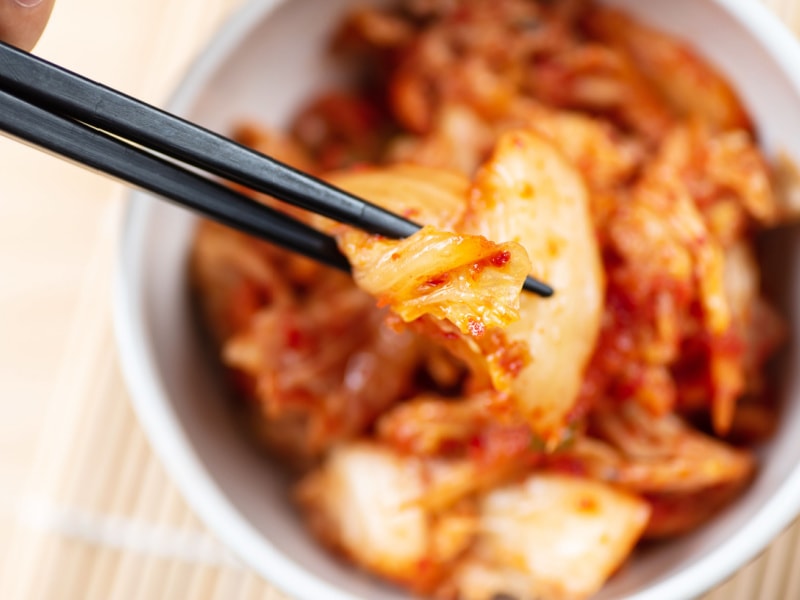
What Does Kimchi Taste Like?
If you like fermented condiments, you’re in for a real treat!
Kimchi is one of the funkiest and most flavorsome fermented foods around.
It has a very distinct and complex taste. This sets it apart from other fermented things like sauerkraut.
It’s tangy, salty, savory, and spicy. Whereas the texture is crunchy.
Most of all, though, it’s sour.
The sourness comes from the lactic acid produced during the fermentation process.
It’s very noticeable and comes through as the prominent flavor.
As for the Scoville scale, some versions are on the milder side.
So even if you don’t like spicy food, you can still enjoy this Korean delicacy.
Other versions may be more umami while others are more savory. Add carrots or radishes to kimchi and it will take on a fresher flavor.
Then there are all the different varieties of cabbage that can change the taste.
So really, the flavor depends on who makes it and the ingredients they use.
Different regions will all taste a little different. Then there are all the store-bought versions to try!
With so many types, it’s hard to get bored with kimchi.
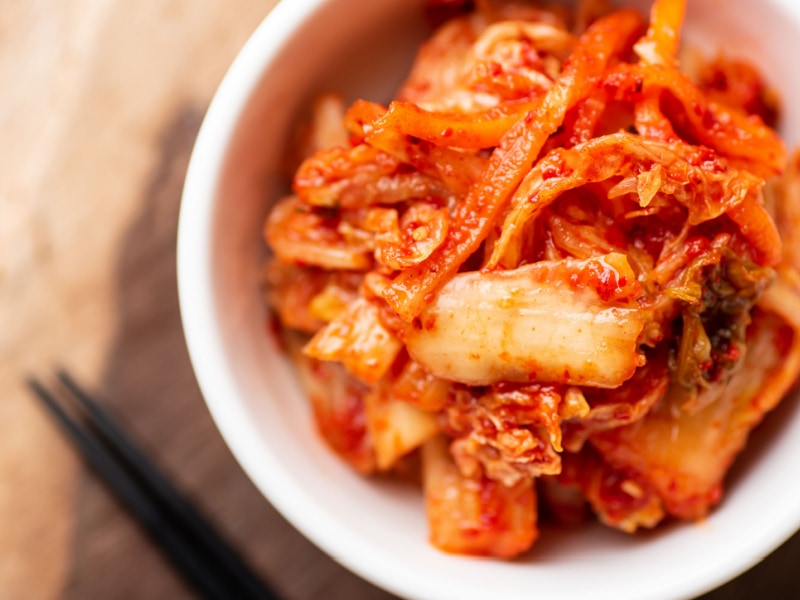
How Is Kimchi Made?
First things first. If you’re planning on making kimchi, there is one thing to be aware of. This stuff is pungent!
Like other fermented foods, it can create quite the aroma. But boy, is it delicious.
It starts with chopping up cabbage, then combining it with a salty brine.
At this point, you also add any extra veggies, aromatics, and a spice paste.
As I mentioned before, garlic, ginger, fish sauce, and gochugaru are popular ingredients.
Massage the spice paste into the cabbage and firmly pack all the ingredients into a jar.
As it sits, it undergoes a lacto-fermentation process.
This is when a good bacteria known as lactobacillus eats away at the sugars.
In turn, it produces lactic acid as a byproduct giving it that lovely tang.
It also helps to preserve the kimchi so you can enjoy it months later.
Overall, the fermentation process takes a few days. Two weeks is prime for optimal flavor.
Some people like to let it sit for even longer. The longer it sits, the more flavor it develops.
If you need to speed up fermentation, place it in a humid environment. On the contrary, place it in the fridge to slow it down.
As for cabbage, Napa cabbage is the most common variety used.
Of course, there are variations to this method too.
Radishes, carrots, cucumbers, and even bok choy are sometimes used to make kimchi.
It’s just a matter of what you’re in the mood for.
Oh, and if you don’t have time to wait, make quick kimchi.
Like quick pickled veggies, it’s ready in a fraction of the time.
It won’t have the same developed flavors, but it does the trick.
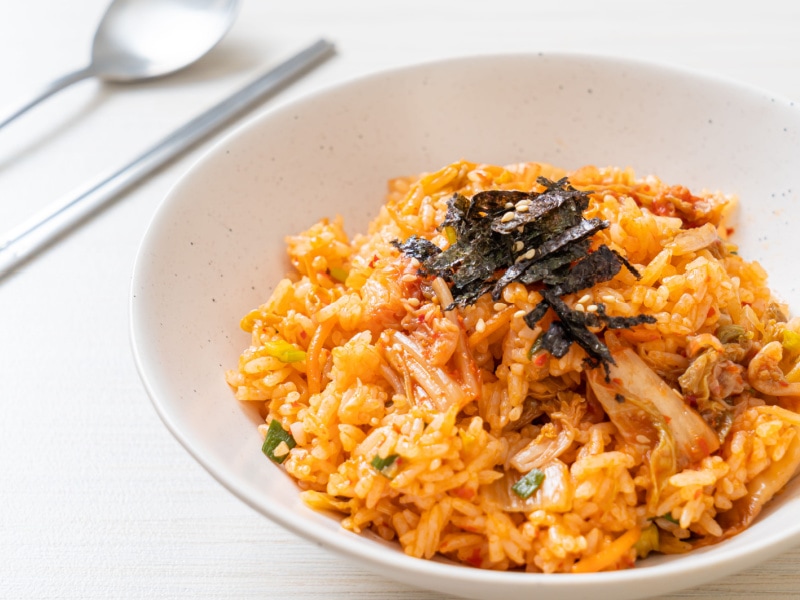
How to Use Kimchi
Kimchi is to Korea as fries are to America. It’s eaten with everything!
It’s the go-to side dish for all meals. It’s also a common snack eaten all by its lonesome.
But this superfood doesn’t stop there. From soups to egg scrambles, kimchi is good in an array of dishes.
For an authentic experience, try it in traditional Korean dishes. Korean fried rice and kimchi pancakes are excellent places to start.
It’s also a great side for a plate of pork belly and rice.
From there, jump into Korean street food favorites like Korean rice burgers.
Once you explore the country’s cuisine, have fun with it. I love kimchi in quesadillas and as a pizza topping.
Slap it on a burger and you’ll be in for a punch of flavor. Or pile it into a legendary grilled cheese!
It’s also a personal favorite of mine in fried grain bowls.
It’s a great way to use up leftovers like quinoa and it has more protein than fried rice.
Of course, you can’t go wrong with eating it as a snack. It lets you appreciate the complexity and nuanced flavors.
No matter what you add it to or how you eat it, kimchi is an extraordinary food.
Where to Buy Kimchi
Nowadays, kimchi is pretty much everywhere.
It has become so popular that most major grocery store chains stock kimchi.
You’ll typically find it in the produce area where they keep fresh refrigerated foods like tofu and fresh pickles.
However, pickings may be slim. Depending on your area, you may only find one brand of kimchi on the shelves.
For more options, go to your local Asian food store. Even some natural food stores carry multiple brands.
They tend to have local options and more variety.
You can also find it at restaurants, sushi bars, and even some farmer’s markets.
If you can’t get your hands on kimchi, make it yourself!
There are plenty of recipes to follow that use accessible ingredients.
Plus, you can tailor it to your liking.
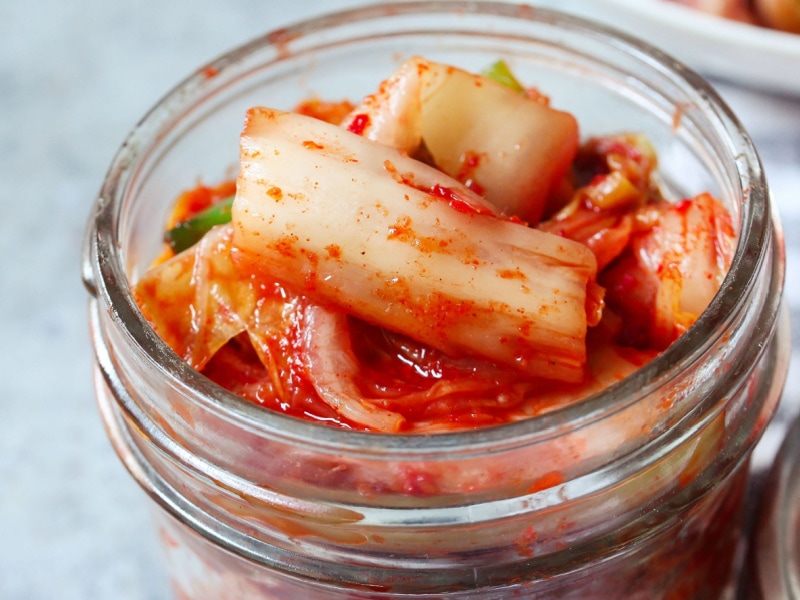
How to Store Kimchi
So you got your hands on kimchi, now what do you do with that jar?
Storing kimchi is easy. Simply place it in the refrigerator.
Fermented foods were designed to last long. The same thing goes for kimchi.
Store it in an air-tight container and it will last for months in the fridge.
If it’s shelf stable and unrefrigerated, you can keep it in a cool cabinet. Once it’s open, though, place it in the fridge.
Keep in mind, like all things, the longer it sits, the more the quality declines.
So I recommend using it up within a few weeks.
Let it sit for months and the sourness may be unbearable.
